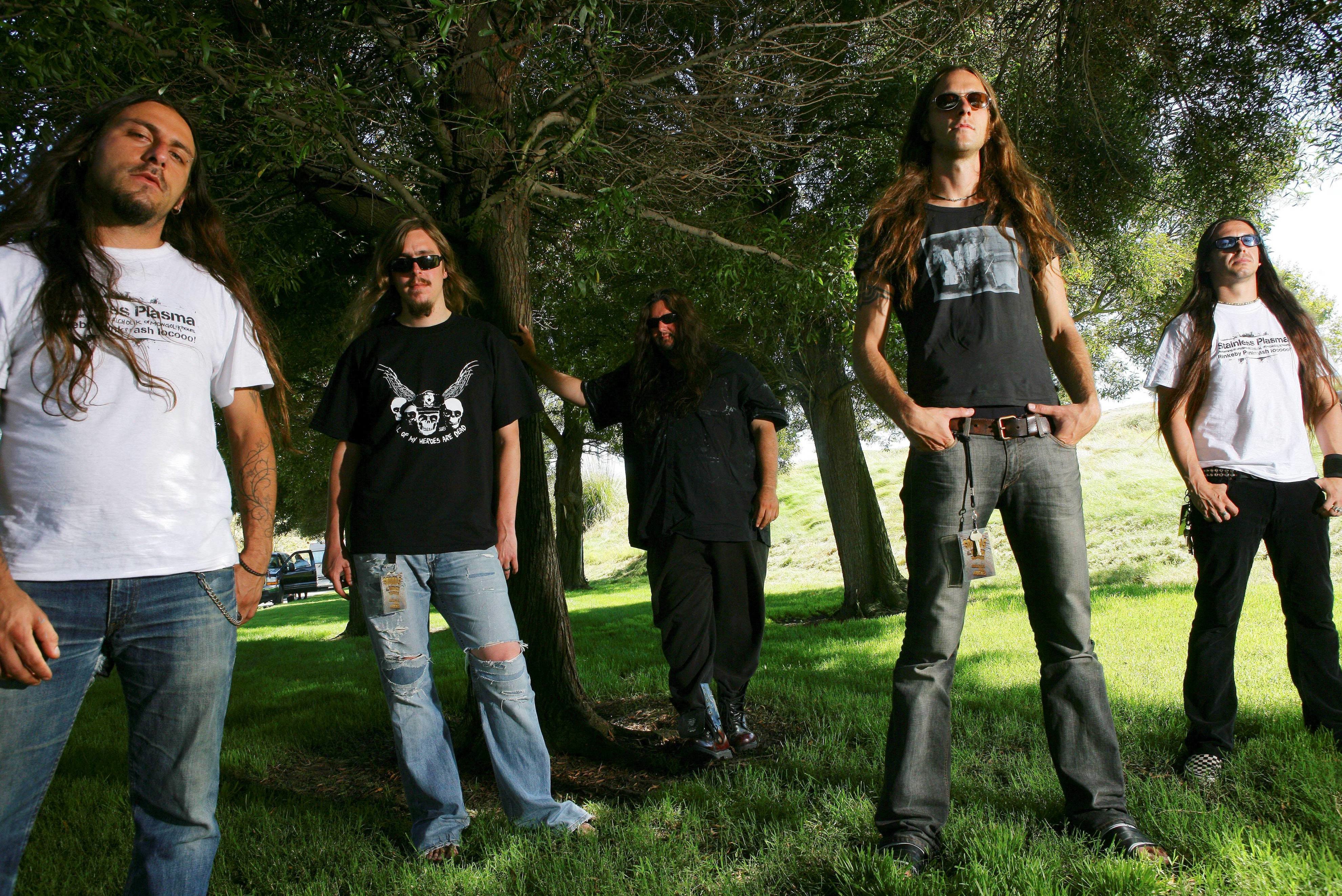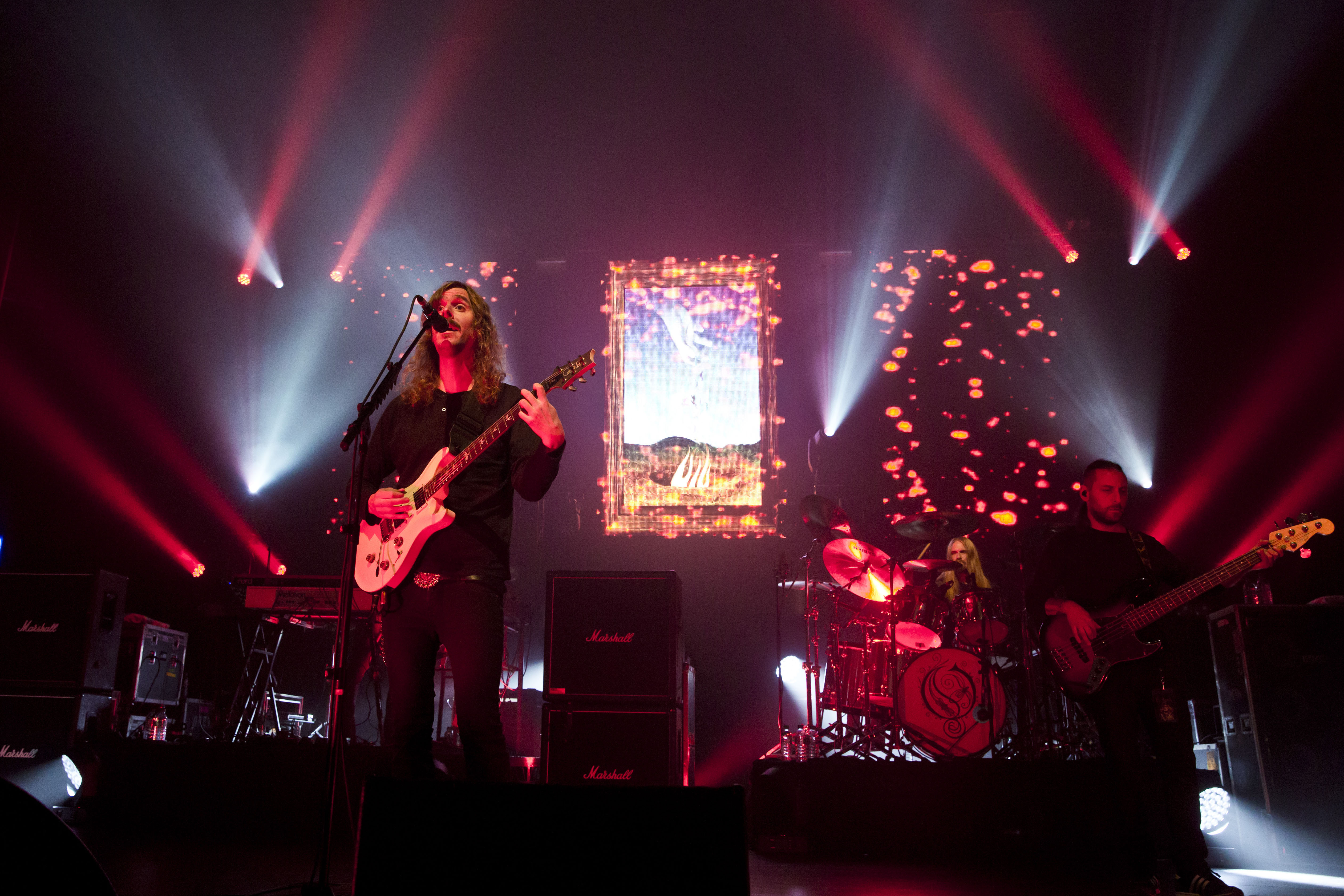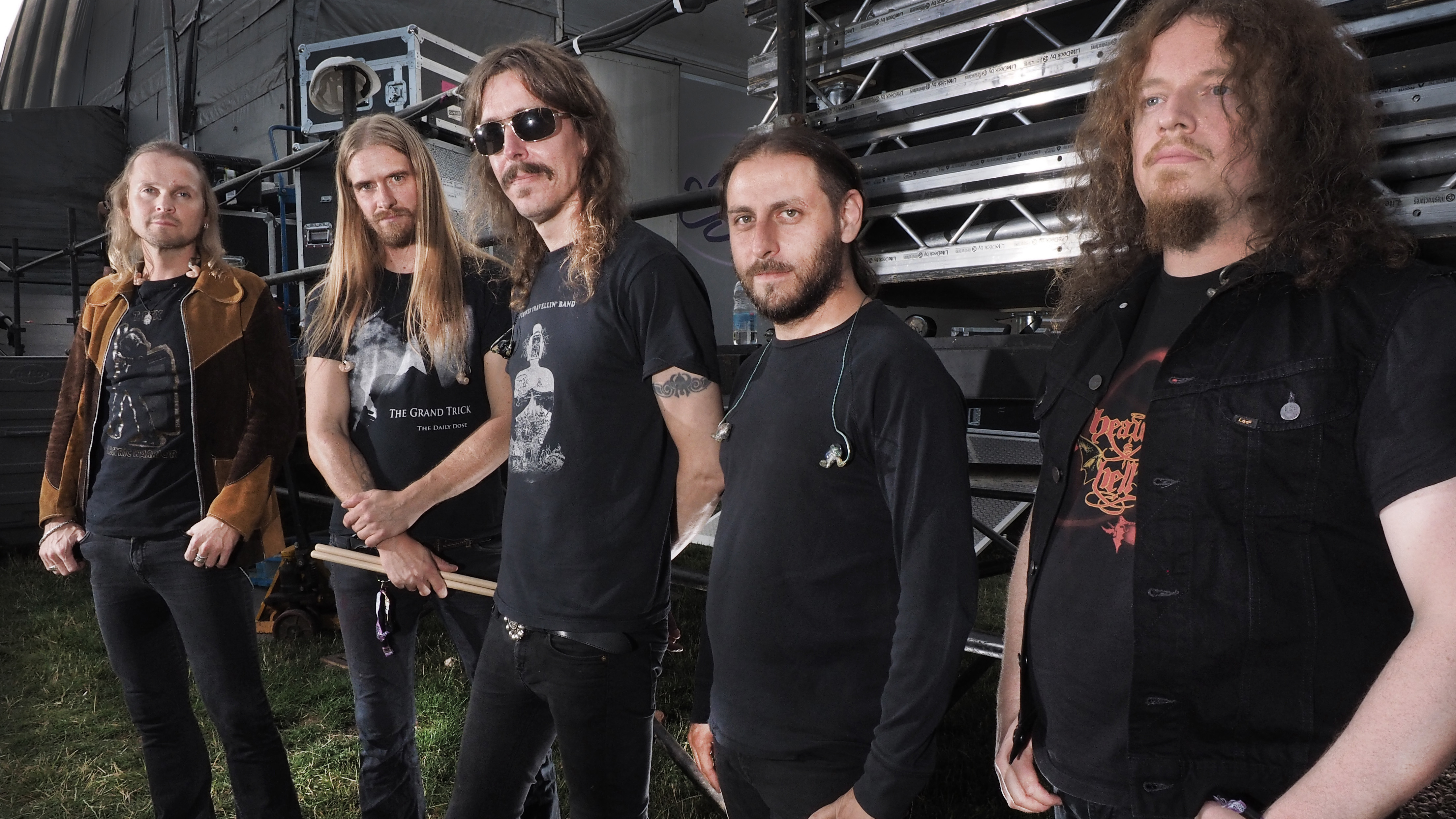With as almost as many albums as the band have had members, Swedish titans Opeth have a storied history, from their death metal roots unto the increasing flourish of melody in their ever progressive present, with more than a few bass players along the way, including, if only very briefly, their winsomely charming creative mastermind Mikael Åkerfeldt. With their latest album In Cauda Venenum just around the corner, it’s time to brush up on their past.

A is for Acoustic
2003’s Damnation was initially intended for release as a double album with the none more death metal Deliverance, but was eventually released five months later. It was a herald of things to come, an emotive concoction of Mikael Åkerfeldt’s ever haunting vocals, and acoustic guitars elevated by the distinctive Latin twist of then drummer Martin Lopez, a signpost pointed towards the increasingly mellow and progressive territories that the band these days inhabit.
B is for Bloodbath
Swedish death metal supergroup Bloodbath started out as a fun side project for Katatonia members Anders Nystrom and Jonas Renske and featuring Mikael Åkerfeldt on vocals until his departure to concentrate fully on Opeth, taking drummer Martin Axenrot with him in 2005. What had started out as a love letter to old school death metal became an increasingly hot prospect by the release of third full-length The Fathomless Mastery in 2008, the band playing rare and now legendary shows at Wacken, Hellfest and Bloodstock.
C is for Concept album
Ever a stalwart of progressive rock, many of Opeth’s records fall into this category, often with a cryptic tale to be told, and for eagle-eared listeners to decode. For example, the last words sung of each track of 1998’s My Arms, Your Hearse are the name of the following song.
D is for David Isberg
Opeth are a band in the strange position of containing no original members. Their founder and original vocalist David Isberg invited Åkerfeldt to audition for the band as their prospective new bassist, only for him to show up to practice and find the current bassist none the wiser. Mikael was asked to wait outside, and in the ensuing row, all the members quit, leaving only Isberg and Åkerfeldt remaining. Mikael assumed his preferred position as guitarist, and later lead vocalist, when Isberg left a couple of years later.
E is for Eruption
Mikael Åkerfeldt’s first band, started in the late 80s at the tender age of 14. A three piece with Mikael on vocals, the band played a mixture of their influences, covers of Black Sabbath and the Misfits alongside original compositions. A couple of years later, Mikael’s friend David Isberg would ask him to come along to an ill-fated Opeth rehearsal. He was attracted because at the time they had a cool inverted cross in their logo.

F is for Fredrik Åkesson
Former member of fellow Swedish death metallers Arch Enemy, Åkesson originally replaced guitarist Christopher Amott, brother of founding member Michael, in 2005, before making way for his return in 2007. Opeth came calling after the departure of guitarist Peter Lindgren around the same time, and they all lived happily ever after. Åkesson’s first album was 2008’s Watershed, on which he co-wrote fifth track Porcelain Heart.
G is for Ghost Reveries
In many ways it was their eighth album, released in 2005, that propelled Opeth to the next level of stardom, further consolidating the concoction of death metal and progressive meanderings the band had firmly established and had been further building upon since 1999’s Still Life. Conceptually Åkerfeldt was inspired by occult literature in his wife’s collection, giving the record its delectably dark concept.
H is for Hammond organ
A signature instrument of the progressive rock which has so inspired Opeth’s continued evolution, the Hammond organ’s unmistakeable tones rose increasingly to prominence in their sound on 2011’s Heritage and 2014’s Pale Communion. The band’s original keyboard player Per Wiberg only joined the band for Ghost Reveries as the band sought to flesh out their sound, later leaving to be replaced by Joakim Svalberg.
I is for Ihsahn
Mikael Åkerfeldt is one of modern metal’s few auteurs, a defining artist of singular voice and unparalleled ability. Another of such is undoubtedly Ihsahn, an icon of Norwegian black metal as frontman of Emperor, the band whom above all others was early on responsible for showing the symphonic, progressively complex potential of black metal. Since Emperor’s demise Ihsahn’s solo material continues his diverse experimentation, featuring Åkerfeldt as guest vocalist on the track Unhealer from 2008’s angL.
J is for Johan DeFarfalla
An early member in the ongoing bassist saga of the ever-revolving door of Opeth band members, DeFarfalla contributed to their first two records, 1995’s Orchid and 1996’s Morningrise. A lover of jazz fusion, he left the band citing creative differences, Åkerfeldt uncomfortable with how much emphasis he expected the bass to have in their sound. Having renounced his satanic metal past, these days he is a member of the Christian Democratic Party of Sweden.
K is for Katatonia
Fellow Swedes Katatonia share an indelible link with Opeth, not only because of their shared history as members of Bloodbath. Mikael has contributed to several Katatonia releases, most significantly 1996’s Brave Murder Day, their second album, on which he sang lead vocals. A stand out part of their extensive discography, the rich baritone of Åkerfeldt’s death vocals perfectly complement the band’s iconic, dour fretwork, creating one of their most dismally memorable records to date.
L is for Legolas
The other nickname of drummer Martin ‘Axe’ Axenrot, given to him jokingly by the band for his passing resemblance of the flaxen haired, delicate beauty of JRR Tolkien’s legendary elf. An adept death metal drummer, Axenrot has played with Bloodbath, Nifelheim and Witchery. He has successfully adapted his intricate style of playing to complement Opeth’s ever evolving sound, never sounding more liberated than on forthcoming opus Sorceress.
M is for Martin (Lopez and Méndez)
On the hunt for a new drummer and bass player, the band placed an ad in a music shop, which was responded to by drummer Martin Lopez, and bassist Martín Méndez. Both of south American descent, the band initially balked at employing both, lest it create a divide. Realising this was nonsense, they were hired, contributing to some of the finest albums in the band’s discography. Lopez sadly departed after Ghost Reveries for health reasons, replaced by Martin Axenrot and these days playing drums in supergroup Soen. Méndez remains in the band. Opeth were unavailable for comment on what the deal with all the Martins is.
N is for Nuclear Blast
Opeth’s current label, legendary German metal imprint Nuclear Blast isn’t the only place they’ve called home. Originally signed to British extreme metal label Candlelight, they have also released albums on Roadrunner, Peaceville, and Music For Nations. So, pretty much every significant metal label, then. Sorceress will be the first album released as a joint venture between Nuclear Blast and Opeth’s very own, brand new label Moderbolaget Records, an exercise perhaps in control, in an unstable modern musical climate.
O is for Orchid
Opeth’s 1995 debut was thusly named as a means of illustrating the diversity in their songwriting; a reference to the countless varieties of the aforementioned plant, prized by collectors the world over. The band were picked up by their first label Candlelight based on the strength of one rehearsal tape alone.
P is for Peter Lindgren
Joining the band in 1991 to play – you guessed it – bass, Lindgren soon switched to guitar, forming a creative partnership with Åkerfeldt that would last 16 years and saw the talented guitarists co-writing and sharing lead duties. His departure from the band came as a result of creative fatigue, with Mikael assuming the role of lead songwriter henceforth.
Q is for Queen
There are few bands as iconic as Brit show boaters Queen, and even fewer upon whom their legacy has had an effect. Opeth are one such band, choosing Rockfield studios in Wales to record 2011’s Pale Communion due to the amount of legendary records made there, from Queen’s Sheer Heart attack, through to one of Åkerfeldt’s favourite metal albums of all time, Judas Priest’s 1976 scorcher Sad Wings of Destiny.

R is for Royal Albert Hall
A prestigious London venue more accustomed to hosting the Proms than Swedish death metal bands, Opeth played here in 2010, releasing a live album and DVD to commemorate the special occasion; a night which Mikael has described in the past as his favourite show they ever played. The album’s artwork is a reference to Deep Purple’s 1969 live album Concerto For Group And Orchestra, also recorded there.
S is for Stephen Wilson
A modern day prog rock powerhouse, the Porcupine Tree mainman was a fan of Opeth’s 1999 classic Still Life, emailing Åkerfeldt his compliments, which later led to Mikael asking him to produce 2001’s stunning Blackwater Park. Wilson’s impact upon their sound is not to be underestimated, adding a mature finesse to their progressive leanings that forever changed them. The same could be said for Porcupine Tree, whose output seemed to get heavier. The two friends collaborated on epi-prog labour of love Storm Corrosion in 2010.
T is for Travis Smith
A supremely talented graphic designer, American artist Travis Smith has designed album covers for countless metal bands, everyone from Avenged Sevenfold to King Diamond. As well as designing covers for Opeth’s close friends Katatonia, he has also designed several of their covers, the first of which was Blackwater Park, and the last, the forthcoming Sorceress.
U is for Roadrunner United
Released to commemorate Roadrunner record’s 25th anniversary, Roadrunner United was a project the likes of which is rarely seen, bringing together a diverse array of metal artists from the label’s past and present in an idiosyncratically diverse tracklist of collaborations, some of which, it’s fair to be said, work better than others. Åkerfeldt appears towards the end of the album, sticking out like a sore thumb amongst the sonic battery on offer, with a sombre two minute piece entitled Roads, also featuring keyboardist Josh Silver of the often mourned Type O Negative.
V is for Vinyl
An avid record collector, Mikael Åkerfeldt lives and dies by his vinyl collection, which now stands at well over 4000 records, representing his love of 70s prog and penchant for collecting rare - and sometimes expensive - vinyl, avidly collecting everything he can find that was released on the Vertigo label imprint - the one time home of Black Sabbath and mother lode of prog rarities.
W is for Wilbur Smith
Opeth founder David Isberg named the band after the fictional city of Opet, which means “City of the Moon”, from South African author Wilbur Smith’s 1972 novel The Sunbird. Åkerfeldt has spoken of his distaste for the novel in the past, dismissing it as little more than pulp fiction.
X is for XXV Anniversary Imperial Stout
Not only are bands content to flog you a t-shirt at a gig these days, plenty of them want to get you pissed on their own terms, Opeth joining the likes of Iron Maiden and Behemoth with their very own booze, the aforementioned, and at 9% apparently rather strong, stout and an accompanying Communion Pale Ale – see what they did there?
Y is for Yes
One of the foremost progressive rock act of the 1970s, Yes, alongside other seminal acts the likes of Camel and King crimson form the basis for Mikael Åkerfeldt’s continuing love of prog, and a key influence that set Opeth apart from their death metal peers in their early days. As the band have moved increasingly further from their metallic roots, it is the legacy of these seminal 70s acts that increasingly shape their current direction.
Z is for Ziltoid
What you say? How is Devin Townsend’s zany alien linked to Opeth? Through the artwork of the aforementioned Travis Smith, who also designed the cover for 2007’s Ziltoid The Omniscient, among several other Townsend records. Everyone’s favourite poop-obsessed alien’s appearance on the list also gives us chance to acknowledge Mikael’s guest appearance on Devin’s 2011 album Deconstruction, on second track Stand. Indeed.

In Cauda Venenum will arrive this autumn on a date still to be finalised through Moderbolaget / Nuclear Blast Entertainment. Two different versions of the record will be released: One in English and the other in Swedish.
